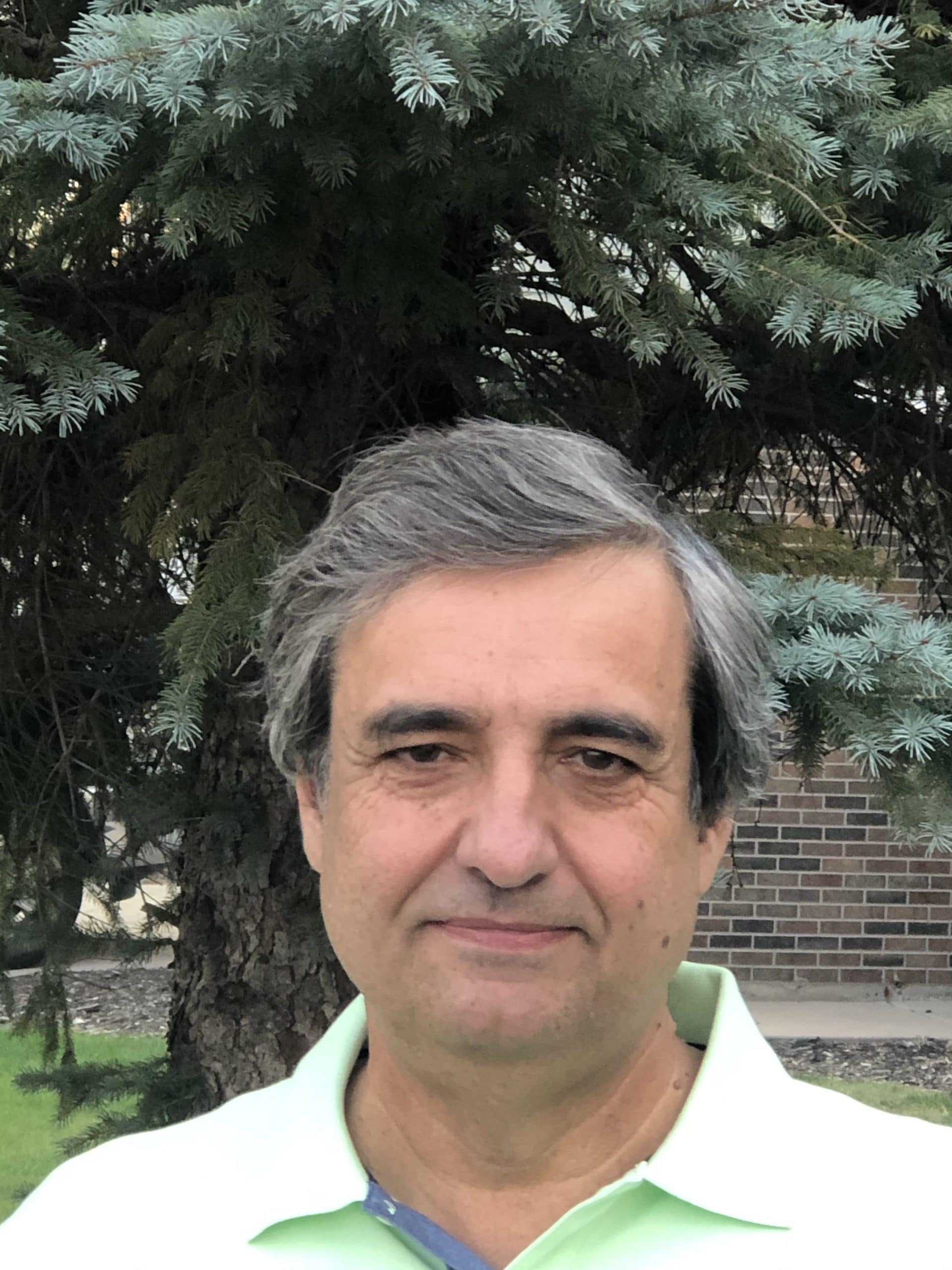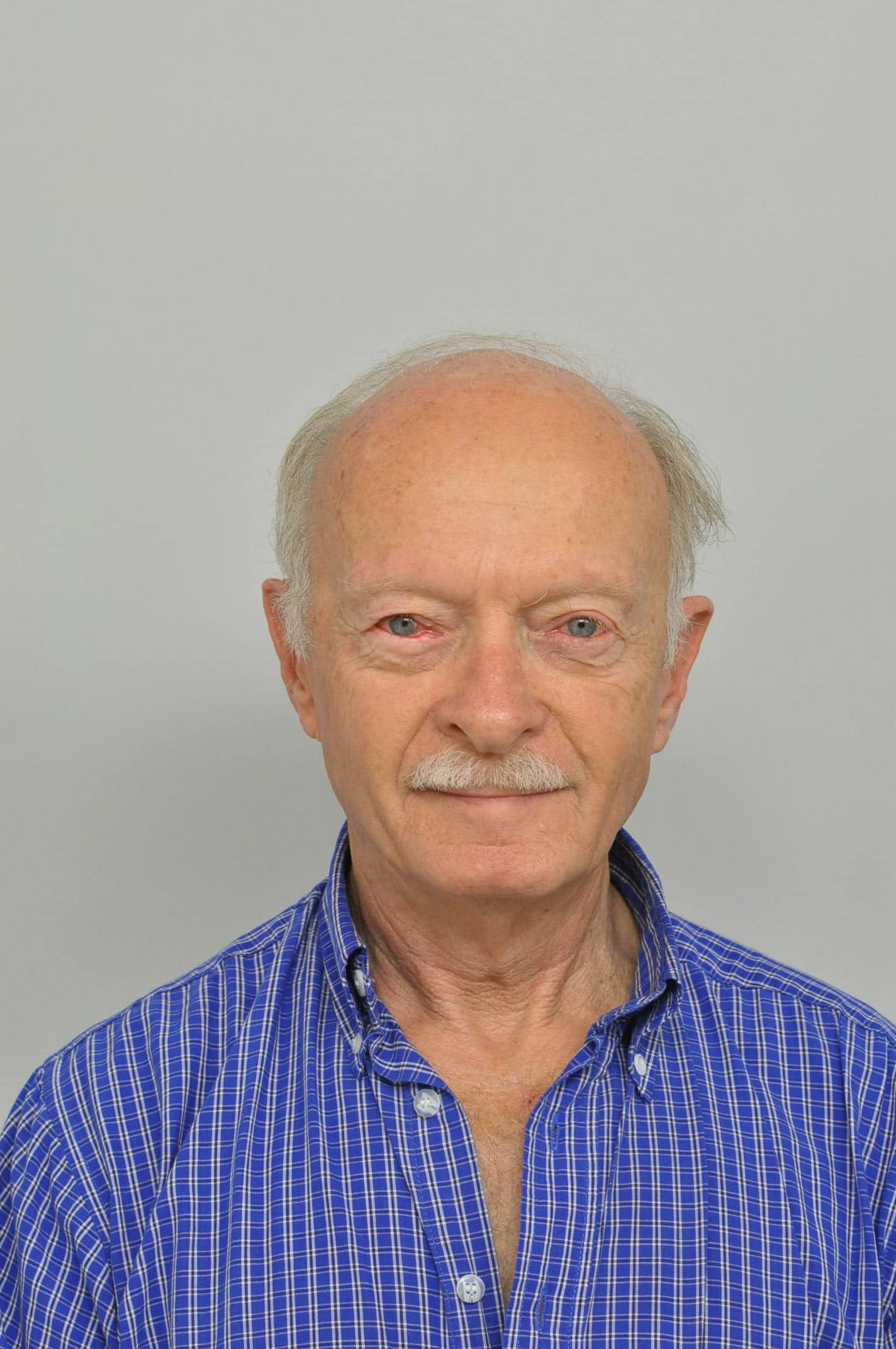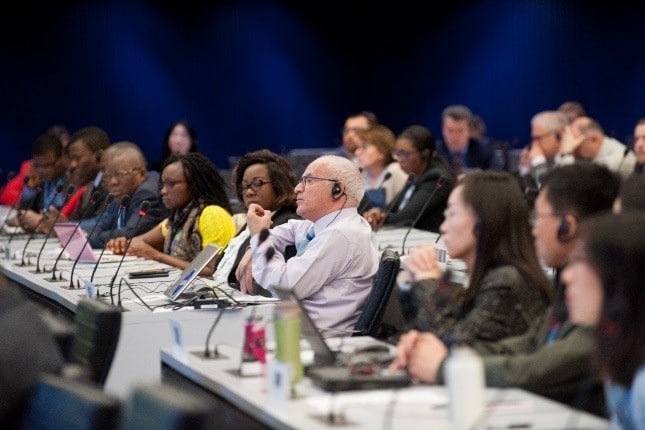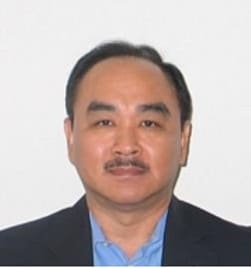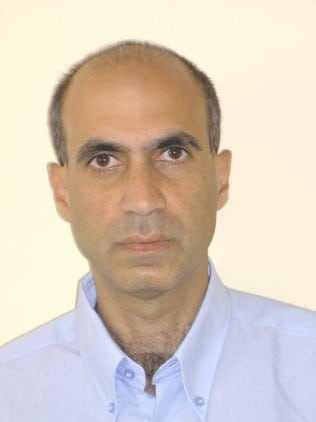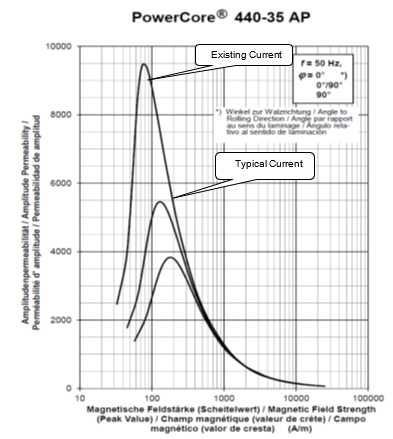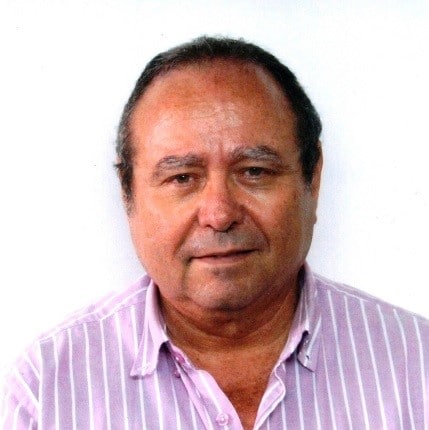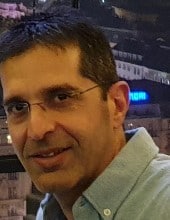2020 IEEE Israel Conference on Electromagnetic Compatibility (EMC)
Thursday, October 15, 2020
Thank you to those who attended the 2020 IEEE Israel Conference on Electromagnetic Compatibility (EMC) which took place (online) on Thursday, October 15th, 2020. (using Zoom).
The conference was organized by the IEEE Israel EMC Chapter, in cooperation with SCE Shamoon College of Engineering (Ashdod) and the Association of Engineers in Israel (AEAI).
This EMC conference presented fundamental and applied EMC topics, provided by leading experts from Israel and abroad.
We hope you found the content of the conference useful and interesting.
You are most welcome to attend and meet us at the next IEEE Israel EMC conference, in 2021.
Organizing Committee:
Dr. Irit Juwiler, Head of Electrical & Electronics Engineering, SCE Ashdod – Conference Chair
Prof. Jacob Gavan, IEEE Life Fellow, Chairman IEEE EMC Israel Chapter
Mr. Moshe Netzer, SM IEEE, CEO EMC Engineering and Safety Ltd.
Mr. Shmuel Auster, Chair – IEEE Israel Section, Chair – Israeli society of Electronics Engineers, AEAI
For records and presentations:
SESSION A
1) Fault Propagation, EMI Induced Fault Propagation in Aerospace Systems (English) ,Dr. Ray Perez, USA
2) Cable shield transfer impedance applicability to radiated emission evaluation (Hebrew), Oren Hartal, Israel
Presentation
SESSION B
3) Updated Human Exposure Standards IEEE 2019 and ICNIRP 2020, towards 5G applications (Hebrew), Dr. Haim Mazar, SCE Ashdod, Israel
Presentation
4) Spectrum Management Challenges Associated with Large LEO/MEO Constellations of Small Satellites (English), Dr. Tien M. Nguyen, USA
SESSION C
5) Full wave rectenna arrays for radiative power beaming in the UHF and the millimeter wavelengths (Hebrew), Prof. Yosef Pinhasi, Ariel University, Israel
6) Estimation of the increase/decrease of Magnetic Flux Density (MFD) in the Presence of Structural Magnetic Shielding (Hebrew), Moshe Netzer CEO EMC Engineering and Safety Ltd., Israel
Presentation
7) Antenna topologies in IoT Circuit (Hebrew), Avi Cohen, Israel
Presentation
Abstracts and lecturers details:
Webinar # 1; 09:30-10:00
Fault Propagation, EMI Induced Fault Propagation in Aerospace Systems
Ray Perez, Denver, Colorado USA (webinar will be conducted in English)
Abstract: The occurrence of faults in aerospace system hardware and software have consequences ranging from minor effects to catastrophic effects, and such faults can directly affect the safety of hardware and personnel. There are many origins to fault conditions, and the hardware that is capable of still meeting its performance requirements after experiencing itself a fault is said to be fault tolerant. A fault tolerant hardware is capable of detecting, isolating, and recovering from a fault condition; and this is a subfield of control engineering. An aerospace system that has been shown to have electromagnetic compatibility (EMC) in all its subsystems and systems cannot induced faults caused by electromagnetic interference (EMI). It can be proposed that the presence of EMI (or lack of EMC) is analogous to a potential fault initiator and the effects can likewise range from minor to severe. This presentation starts by addressing the consequences of hardware failure in aerospace systems from a fault perspective, because the design of fault tolerant system is a major endeavor in aerospace. To arrive to this goal the paper starts with the concepts of fault, fault propagation, and a new concept called fault containment region. The presentation then proceeds to provide two very recent examples in the aircraft industry of fault propagation. The presentation proceeds to introduce the concept of EMI fault containment and a brief introduction to another new concept called the EMI containment region. The presentation ends with a lesson learned conclusions.
Ray Perez, PhD, PE has been employed in the US aerospace industry for 32 years. Ray started as an EMC engineer in his early days but over the years he migrated to design engineering and reliability engineering for the electronics designs of avionics. He still practices sound EMC principles in design engineering and reliability engineering of avionics. He has served as a lead reliability/design engineer for many aerospace projects. He is the author of 5 engineering books and has written close to 70 papers in journals and conferences. He is a past member (8 years) of the BOD of IEEE Press/Wiley and has occupied multiple positions in IEEE engineering societies and its journals. He is a senior member of the IEEE and AIAA.
Webinar # 2; 10:00-10:45
Cable shield transfer impedance applicability to radiated emission evaluation
Oren Hartal (webinar will be conducted in Hebrew )
Abstract: The classical definition of Transfer impedance is derived from the voltage developed on the inner wires in a shielded cable under the effect of the shield surface current.
This transfer impedance is considered to be reciprocal and hence used to estimate radiated emissions from the shielded cable, based in the internal wire current.
The Validity of this approach is investigated, by laboratory measurements with some interesting results.
Oren Hartal
Graduated from Haifa Technion as a BSc EE, in 1966, and holds an MSc. EE since 1976.
Resume :
1966 – Joined RAPAEL-Israel’s Armament Development Authority, served as a team leader and EMC Section head, Head of the Electro-Magnetics Department., Held the position of Chief Scientist till 2005.
2001 – On mission to INDIA as a UN expert on EMC.
1997, 1984, 1990, 2005 – sabbatical terms in the US
As of 1984 – Instructor and trainer in EMC in Israel, US, Turkey, Singapore
Current activity: EMC/EMI/ELF Design and Consultancy and Training services to industrial and engineering orgs as well as government and defense agencies.
Publications and affiliations :
Author of the book “EMC by Design”
Honorary member of SIEEE, Past Senior Member of IEEE and chairman of IEEE EMC Israeli chapter, Past Chairman of URSI Israeli Commission E , NARTE EMC engineer, Certified service provider by the ministry of environmental protection,
Recipient of RAPHAEL Prizes for a brilliant solution and for fostering disciples (העמדת תלמידים)
Webinar # 3; 13:00-13:45
Updated Human Exposure Standards IEEE 2019 and ICNIRP 2020, towards 5G applications
Dr. Haim Mazar, SCE Ashdod (webinar will be conducted in Hebrew)
Abstract: The (International Commission on Non-Ionizing Radiation Protection) Guidelines are the base for Administrations to limit the exposure to RF-EMF. ICNIRP 2020 Guidelines for limiting exposure to electromagnetic fields (100 KHz to 300 GHz) were published March 2020. The presentation will detail the limits, EMF Policies, physiological effects, exposure limits for radio-frequency fields, radiocomminications in the community, specific absorption rate, compliance and mitigation, 5G Implementation: EMF and other challenges.
Dr. Haim Mazar has been involved in wireless communications and the related regulatory and industrial activities since 1971 and has headed the RF spectrum management, licensing and monitoring division at the Israeli Ministry of Communications. Mazar is a lecturer to 4th years EE at Sami Shamoon College of Engineering, Electronic Engineering. The ITU Radio Assembly 2019 nominated (84 countries) him vice-chair ITU-R Study Group 5 (terrestrial services). He currently serves as ATDI spectrum management and licensing expert. Haim is ITU and World-Bank expert. In addition to ITU-D and ITU-T papers on EMF, he contributed more than 240 papers to all ITU- R Study Groups since 1991; mainly on spectrum management, coexistence and antenna patterns. His Wiley book ’Radio Spectrum Management: Policies, Regulations and Techniques’ appears also at Amazon. The Book is already published in Chinese. He received his BSc in electrical engineering from the Technion, Haifa, Israel in 1971, an MBA from Bar-Ilan University, Israel, in 1988, and a PhD from Middlesex University, London, UK in 2008, specializing in worldwide spectrum management and regulations. More details at http://mazar.atwebpages.com/CVMazarEN.pdf, including international publications on EMF.
Webinar # 4; 13:45-14:30
Spectrum Management Challenges Associated with Large LEO/MEO
Constellations of Small Satellites
From: Dr. Tien M. Nguyen (webinar will be conducted in English)
Abstract: Due to growing of small satellites (smallsats) with large constellations, the risk of unintentional radio frequency interference (RFI) will be increased significantly in the near future. The future spectrum management approach should address the following four issues: (i) Spectrum allocation, (ii) Spectrum authorization, (iii) Advanced spectrum engineering, and (iv) Spectrum compliance for avoiding un-intentional RFI and physical obstruction from smallsats.
This lecture will discuss the above four issues and analyze the impacts of smallsat and large LEO/MEO constellations on spectrum policies and execution of future spectrum management approach. The lecture will provide recommendations for new spectrum policies and regulations, improved and more efficient spectrum authorization processes, the development of a systematic and innovative approach to address the Un-Intentional RFI and physical blockage from smallsat with large LEO/MEO constellations to existing satellites systems, new spectrum operating standards to address combined RFI and physical interference due to smallsats blockage, and spectrum compliance for avoiding un-Intentional RFI and physical obstruction from Smallsats.
Dr. Tien M. Nguyen received his M.A. in Mathematics, and his Ph.D. in Applied Mathematics from the Claremont Graduate University; M.S.E.E. in Communication Systems Theory from University of California San Diego; and B.S.E. in Electronics and M.S.E. in Electromagnetic Field Theory from California State University Fullerton (CSUF). He completed all course requirements and passed the comprehensive exam for his M.S.E.E. in Digital Signal Processing from California State University Long Beach.
Dr. Nguyen is an expert in Satellite Operations (SATOPS), Satellite Communications (SATCOMs), advanced Radio Frequency Interference (RFI) modeling for complex systems-of-systems, sensing and communication networks. Currently, he serves as a Deputy Chief Architect for an International Program in Space System Architect Division, Global Partnerships Subdivision at the Aerospace Corporation, where he has more than 13-years of service. Prior to his current position, he has served as Section Manager, Associate Director, and Interim Director. He also rose to the highest technical level at the corporation as Principal Specialist ins SATOPS and SATCOM. At Aerospace, he developed advanced RFI modeling techniques to evaluate impacts of Electromagnetic Interference (EMI) and RFI on space systems, and innovative optimization techniques using game theory for developing affordable and low-risk acquisition strategies; invented HPA linearizers and GMSK synchronizers. Concurrently, he also serves as an Adjunct Research Professor at CSUF. Prior to CSUF, he had also held a Research Assistant Professor at the Catholic University of America (CUA). At CUA, he developed innovative RFI modeling and prediction techniques for SATOPS and SATCOM applications under university research grants from Air Force Research Lab.
Prior to Aerospace, he was an Engineering Fellow at Raytheon Company, where he had 10-year of services, serving as Program Area Chief Engineer for System Integration Product Line, Program Chief Engineer, Principal Investigator, Technical Director, and Program Manager for many advanced programs and pursuits related to sensing and communication networks. At Raytheon, he invented Radar-Common Data Link (R-CDL) technology, gun barrel detector using millimeter-wave, and non-traditional Position-Navigation-Timing (PNT) techniques GPS denied areas.
Previous to Raytheon, Dr. Nguyen was with NASA/JPL for more than 11-years, where he served as the NASA delegate to the international Consultative Committee for Space Data System (CCSDS). Many of his works on RF and Modulation were adopted as CCSDS standards. At JPL, he invented QPSK phase ambiguity resolver and developed innovative optimization techniques for simultaneous range-command-and-telemetry operations.
He built the first laser and automated manufacturing labs when he was with ITT Technical Services in the early ’80s. He has published more than 250 technical reports and papers and served as an editor and author of two books on Satellite Systems and System-of-Systems. His work has appeared in NASA TechBrief, textbook, Open Access Book, SIAM Publication, CCSDS Blue Book, and Wiley & Sons Encyclopedia. He was Vice-Chairman for IEEE Spectrum Management Committee, IEEE general Technical Program Chair, and IEEE session charis/organizers for many IEEE international conferences. He was selected as a Vietnamese-American Role Model by KCSI-TV, Channel 18 in 2002, and Recognition Honoree at 50-Year Celebration of CSUF in 2007. He received numerous IEEE, Raytheon, Aerospace and NASA awards, and commendations from Air Force and Hughes. He holds 16 patents and has one pending. His biography has been listed in Marquis Who’sWho in Science and Engineering in America and Who’sWho in the World.
Webinar # 5; 15:30-16:15
Full wave rectenna arrays for radiative power beaming in the UHF and the millimeter wavelengths
Oz Livne, H. Hirshbein, Ariel Etinger, Boris Litvak, Yosef Pinhasi. Dept. of electrical and electronic engineering,Faculty of Engineering, Ariel University (webinars will be conducted in Hebrew)
Abstract: Rectifying antennas (rectennas) are employed for conversion RF energy into DC power. They are used at the receiving site of radiative power beaming system and energy harvesting schemes. One of their crucial design parameter is the RF to DC conversion efficiency. The rectenna is composed of an array of receiving elements feeding a rectifier, usually PN diode.
A study of rectenna designs, which are based on full rectification scheme is presented. Rectifying schemes are discussed. Conversion efficiency measurements for different load resistance were carried out for identifying optimal operational characteristics. We demonstrate wireless power beaming in 2.4GHz and in 94 GHz.
2.4GHz Rectenna
Prof. Yosef Pinhasi
Yosef Pinhasi is a Professor in Ariel University. He was born in Israel on May 3, 1961. Received the B.Sc., M.Sc. and Ph.D. degrees in Electrical and Electronic Engineering from Tel-Aviv University, Israel in 1983, 1989 and 1995 respectively. In 1995 he joined Ariel University as one of the founders of the Department of Electrical and Electronic Engineering, and served as its head between the years 2004-2007. During 2010-2017 he has been the Dean of the Faculty of Engineering at the Ariel University.
Since 1990 Prof. Pinhasi is working in the field of electromagnetic radiation, investigating mechanisms of its excitation and generation in high power radiation sources like microwave and millimeter wave electron devices, free-electron lasers (FELs) and masers. He developed a unified coupled-mode theory of electromagnetic field excitation and propagation in the frequency domain, enabling study of wideband interactions of electromagnetic waves in media in the linear and non-linear (saturation) operation regimes. He developed techniques for analyzing excitation and propagation of ultra-wide band signals in absorptive and dispersive media, including dielectric materials, as well as in distributed gain medium.
Prof. Pinhasi investigates utilization of electromagnetic waves in a wide range of frequencies for various applications such as wireless communications, stand-off detection, imaging and radars. The space-frequency approach, which developed by him, is employed to study propagation of wide-band signals in absorptive and dispersive media in broadband communication links, and wireless indoor and outdoor networks (including those in the EHF which are designed for the 5th generation of the cellular communications) as well as in remote sensing radars and radiative power beaming operating in the millimeter wavelengths and Tera-Hertz regimes.
Prof. Pinhasi is the head of the laboratory of wireless communications and radars, where Ph.D. and M.Sc. students are carrying their theses. He is radio amateur (call sign: 4Z1VC) and plays the piano and keyboards.
Webinar # 6; 16:15-16:35
Estimation of the increase/decrease of Magnetic Flux Density (MFD) in the Presence of Structural Magnetic Shielding
Moshe Netzer – CEO EMC Engineering and Safety Ltd. (webinar will be conducted in Hebrew)
Abstract: Normalizing the MFD per changes of the utility current with no magnetic shielding installed
There is a linear relationship between the MFD value and the current flowing through the utility power lines. As an example, we measure the MFD from a transformer and obtain 5mG per X ampere/phase. If the current would, increase to 2X ampere per phase MFD measured will be doubled (10mG).
Normalizing the MFD per changes of the utility current with magnetic shielding installed The estimation is based on permeability graph presented herein.
The graph above is depicting the relative permeability µR as a function of the magnetic field (A/m). This graph is presenting µR of an Un-Oriented grain silicon steel that is the most common steel for structural magnetic shielding. If we note the third upper curve (reaching µR = 9500). Small changes of the magnetic field, which is closely related to the 50Hz current would yelled great changes of the steel permeability. The relationship between B and H is given in this formula:
B= µ0 µR∙H (Tessla)
B is the MFD within the magnetic material (silicon steel). With the increase of µR the shielding efficiency increases with the increase of MFD absorption in the steel. It means that the peak SE is related to 80A/m (note the graph), and as the current increases and produces larger magnetic field µR would drop off, thereby decreasing the magnetic SE. As we can see from the graph the H versus B curve is not linear, thus changes in the MFD are not linear with increase or decrease of current.
The following example highlights this point.
a) Analyzing the magnetic field incident the steel plate at the source side
The analysis was performed at 2 m distance from a 1250kVA transformer’s secondary bus bars for 50% max current (900A). The analysis would give 240A/m.
b) Analyzing the magnetic field incident the steel plate at the source side for 25% of Max current
The analysis would give 120A/m.
From the graph above, we can obtain µR at both utility currents:
· At 240A/m, µR=5500
· At 120A/m, µR=8070
c) Analyzing the normalization factor
The difference of the magnetic shielding is clear: with the increase of the current, the magnetic field increases linearly but µR decreases only 70% (5500/8070=0.7). It means that if the MFD at the protected area is X for 50% of the current the MFD will be reduced to 0.7X and not to 0.5X. So, the normalization factor is actually 0.5/0.7=0.7.
Moshe Netzer received his B.Sc in 1976 in Electrical Engineering from the Technion, Haifa.
Since 1976 till 2011, Moshe has worked for RAFAEL, Haifa Israel. He served as a group leader, non-ionizing radiation safety engineer, and the head of ESD safety committee.
Since January 2011 Moshe is the CEO of “EMC Engineering and Safety Ltd.”.
Moshe expertise encompasses EMC in naval platforms, ordnance and communication systems, ESD control, and non-ionizing radiation hazards to personnel, ordnance and fuel.
Moshe is a iNARTE-certified EMC engineer; a Senior Member of the IEEE; the past chairman of the Israel IEEE EMC Chapter and present SEEEI EMC chairman.
In August 2004, he received from the IEEE Electromagnetic Compatibility Society the “Best EMC Chapter of the year 2004” award. In November 2011 he received the “SEEEI Honored Member” for his EMC engineering achievements.
Moshe is the author of 5 books and more than 60 technical papers. He also developed and presented a series of EMC courses on EMI, EMP, ESD, and RADHAZ related topics.
Webinar # 7; 16:35-17:00
Antenna topologies in IoT Circuit
Avi Cohen – (webinar will be conducted in Hebrew)
Abstract: One of the biggest issues in designing IoT device , regards to the receiver sensitivity, and link budget.
The antenna is the physical sensor which receives the desired signal, but also gathers some noise. The origin of the noise could be:
o RF noise collected by the antenna
o Conducted noise (ground bounce) on the PCB.
There are two main antenna topologies [single ended, differential].
The aspect of antenna topologies, in one of the antennas parameters (gain, physical dimensions, radiation pattern and more).
In this short webinar I will show comparison between the two, regards to the noise conducted on the PCB, and show the influence of PCB layout on the antennas noise performance.
Avi Cohen Graduated from ben Gurion university as Bsc in electrical Engineering in 2001. Graduated from HIT as Msc in electrical Engineering in 2017
Resume:
Since 2018 – EMC self-consultant.
Since 2018 – lecturer on ORT BRAUDE academic college –
o introduction to EMC
o Principles in High Speed board design
2001-2018 EMC expert at Government of ISRAEL.
*במסגרת הכנסים, ימי עיון וקורסים מוצג מידע, כמו כן במקרים מסוימים מפורסמים מצגות ודפי עמדה מטעם מרצים ומהנדסים. המידע המוצג במסגרות אלו משקף את עמדת המרצה והמציג ובשום מקרה אין לראות בו מידע רשמי או מידע מטעם לשכת המהנדסים האדריכלים והאקדמאים במקצועות הטכנולוגיים בישראל (להלן: ״הלשכה״). המסתמך או עושה שימוש במידע זה, עושה זאת באחריותו האישית ולא יבוא בכל טענה כלפי הלשכה, זאת כתנאי לכל שימוש או קריאה של מידע זה. אין בהערה זו כדי להוות הסכמה לעשיית שימוש במידע או במוצג או הסכמה לכל פגיעה בזכויות יוצרים של הלשכה או של המפרסמים או בכלל.


